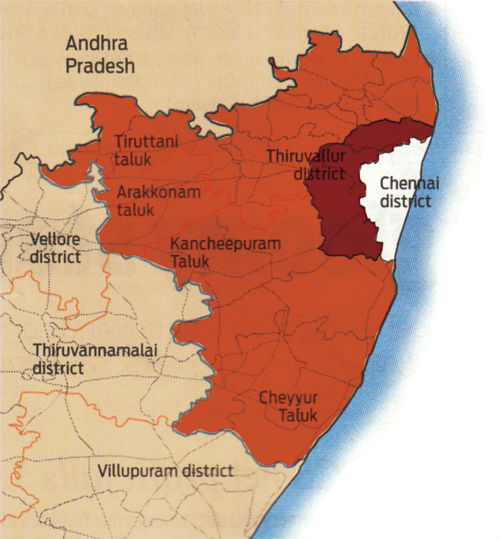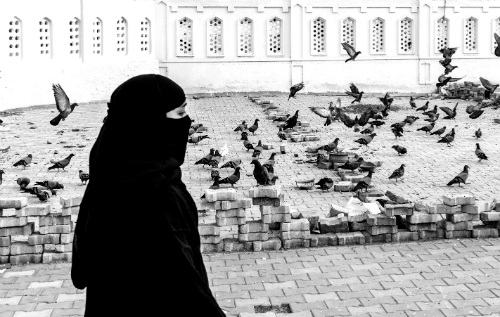Registered with the Registrar of Newspapers for India under R.N.I 53640/91
Vol. XXVII No. 7, July 16-31, 2017
Archives: Vol. XXVII No. 7, July 16-31, 2017
How will expanding the city pan out?
by The Editor
 Our city is all set to expand, yet again. In 2007, we saw Metropolitan Chennai grow to span Minjur to Sholinganallur, an area of 1,177 sq.km. with a population of 7 million. Then, in 2011, the Corporation of Chennai expanded, within the above area, taking unto itself 42 small local bodies, including nine municipalities, eight town panchayats and 25 village panchayats, increasing the area under its jurisdiction by 140 per cent to 426 sq.km. from the earlier 176 sq.km. Now we have Metropolitan Chennai expanding again, to become a mammoth 8,878 sq.km. in area. It will, in effect, encompass all of the Tiruvallur and Kanchipuram Districts apart from Arakonam Taluk. All this is ostensibly with a view to “boosting infrastructure and maintaining uniformity in development to counter the effect of ever-increasing population in the city.” How this will pan out on paper is anybody’s guess.
Our city is all set to expand, yet again. In 2007, we saw Metropolitan Chennai grow to span Minjur to Sholinganallur, an area of 1,177 sq.km. with a population of 7 million. Then, in 2011, the Corporation of Chennai expanded, within the above area, taking unto itself 42 small local bodies, including nine municipalities, eight town panchayats and 25 village panchayats, increasing the area under its jurisdiction by 140 per cent to 426 sq.km. from the earlier 176 sq.km. Now we have Metropolitan Chennai expanding again, to become a mammoth 8,878 sq.km. in area. It will, in effect, encompass all of the Tiruvallur and Kanchipuram Districts apart from Arakonam Taluk. All this is ostensibly with a view to “boosting infrastructure and maintaining uniformity in development to counter the effect of ever-increasing population in the city.” How this will pan out on paper is anybody’s guess.
As a plan it is all very grand. The Government, it is announced, will prepare a plan (we assume based on inputs from the usual consultants who appear to have a monopoly on all urban planning), which will take a year to be finalised. Thereafter, it will be put into action as a master plan “taking into account transport, basic infrastructure, environment protection and protection of fertile agricultural lands.” Each of those words merit attention and we need to see what has been done by way of handling them in the existing areas of the city.
A report card would show that all the civic agencies – the Chennai Metropolitan Development Authority (CMDA), the Corporation, and Metrowater have fared poorly. The core areas, developed more than a century ago, get by on the basis of age-old infrastructure, all of it perpetually on the verge of collapse. The newer ones have next to nothing. Several of the latter still have open drains, septic tanks and no piped water supply. And this includes the so-called state-of-the-art IT corridor. As for transport, people in the periphery still struggle to get to the core areas and vice versa, which accounts for the horrendous bottlenecks in places such as the OMR.
Nearly 75 talks, walks, for Madras Week
by A Staff Reporter
Come join the celebration

A striking picture taken during the Ramzan Walk led by Kombai S. Anwar. Pictures by G.V. Balasubramanian.
Madras Week will be celebrating Madras and its achievements from the 20th to the 27th of August this year. Last year saw enthusiastic city-wide celebrations with excellent support from the media, old and new. This year is expected to be no different, The Week, becoming virtually a Madras Month. These voluntary celebrations of our city will include art and photographic exhibitions, food festivals in hotels with Madras cuisine as their theme, a plethora of walks and talks, quiz contests and other events.
From India’s Digital Archives – 1
Karthik Bhatt
A college’s genesis in a last will
The Digital Library of India (DLI) project, an initiative of the Central Government, aims at digitising significant artistic, literary and scientific works and making them available over the Internet for education and research. Begun in 2000 by the Office of the Principal Scientific Advisor to the Government of India and later taken over by the Ministry of Electronics and Information Technology, it has to date scanned nearly 5.5 lakh books, predominantly in Indian languages.
The archives of the DLI contain a huge collection of books on old Madras and various institutions that were/are part of its landscape. While these include the more famous ones, such as the Madras Tercentenary Commemoration Volume, Story of Madras by Glyn Barlow, and Madras in the Olden Times by James Tallboys Wheeler, several out-of-print publications too are part of the collection. This column will profile some of these.
Walk – to get to know your city’s people
Vincent D'Souza
What is rumani semiya and what do you make out of it?
Is there is a receipe for this semiya?
Some sixty people recently learnt the answers on Triplicane High Road.
They had joined researcher-film maker Kombai Anwar on a trip around Triplicane to get a feel of the mood of Ramzan which ended with the celebration of Eid on Monday.
Organising Walks in a chaotic world isn’t easy. No wonder two policemen on patrol stopped when they noticed a large crowd in the campus of the Mohammedan Public Library and wanted to know why we were here. They appreciated the intent and suggested we avoid causing traffic jams as we walked down.
The jams did occur as people who were new to this part of our city stopped and stared, asked questions, listened to anecdotes from Anwar’s side and interacted with hawkers, Muslims and curious onlookers.
Tackling a proliferating shrub
The MNS recommends
Prosopis juliflora (a mesquite, T.Seemai Karuvel or Veli kaathaan) is being destroyed indiscriminately in the State, according to environmentalists. The High Court directed the Forest Department to constitute a Committee and to advise it on the scientific method to be followed to eradicate this plant. The Madras Naturalists’ Society submitted a representation to the Committee. Summarised and with its recommendations, it states the following:
The plant Prosopis juliflora is widespread in the plains and, possibly, in the coastal regions of Tamil Nadu but is not native to Tamil Nadu. It is a New World species. Prosopis juliflora is understood to have been introduced deliberately by human agency in parts of India in the 20th Century.
A large variety of birds, mammals, reptiles and insects benefit from the species in numerous ways. Obtaining food, protection and nesting sites are among the uses. Just like any other vegetation, Prosopis juliflora serves as a carbon sink and performs various ecological services. Villagers use the thorns
Also in this Issue
- Thank you Donors
- Lost landmarks of Chennai
- Following the Ramzan trail
- S. Viswanathan looks at the two long-standing ‘Make in Tamil Nadu’ units that recently celebrated golden jubilee.
- A new landmark in Chennai
- A museum in memory of MGR
- 90+ and still going strong
- Nostalgia as History – 4
- Short ‘N’ Snappy
- Our Readers Write
- Quizzin’ with Ramanan
- Dates for your dairy

